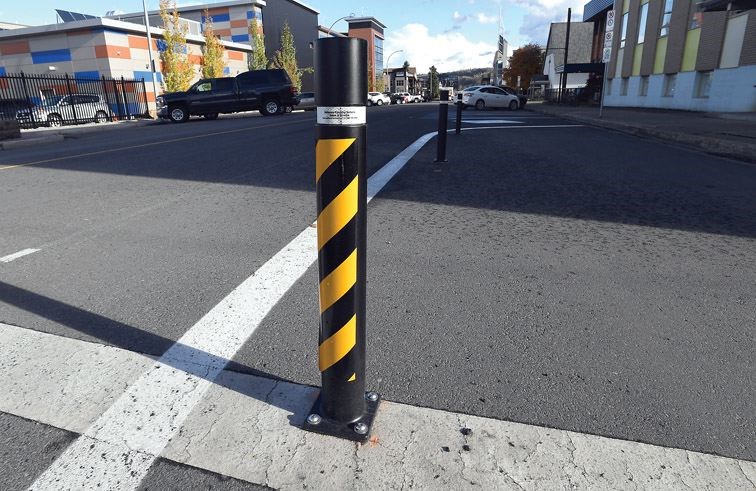The city's parking enforcement bylaw that restricts motorists from parking on downtown streets for more than three consecutive hours during business hours is working as intended, according to a report presented to city council.
Aided by licence plate recognition technology brought in three years ago, the city is getting better detecting parked cars that remain beyond the three-hour limit.
Although complaints about parking tickets is down from 704 in 2017 to 322 so far this year, the number of tickets issued has jumped 21 per cent, from about 6,000 to slightly more than 7,600 in 2019.
"We're getting less complaints about parking tickets and even though our staff are writing more tickets they're doing a pretty good job at identifying those where there's really not an intent to violate the bylaw," said Fred Crittenden, the city's manager of bylaw services.
In its amended bylaw the city exempts downtown residents, disabled motorists, health care/social workers and drivers of taxis, couriers, emergency vehicles, utility and commercial/service vehicles, tow trucks, and drivers with veteran plates from the three-hour restriction.
Now, instead of displaying a tag mounted on the outside of the vehicle, those drivers who meet the exemption criteria will be issued permits that hang inside the vehicle off the rearview mirror.
"In a previous bylaw, disabled parkers were given double the time (to six hours), but we removed that and in the last three years we've found that removing that was probably too much of a step the other way," said Crittenden. "Now, if you're a disabled parker in the downtown you're exempted from the three-hour zone and there are no requirements to park off the street."
The amendment passed unanimously by council Monday also grants volunteer groups or staff of social service/health agencies temporary permits to be used when conducting downtown activities. The rearview mirror permits replace the tag system brought in by the Union of B.C. Municipalities in 1987 which allowed vehicles displaying the tag to park in designated zones in other cities. That program ends on Dec. 31.
"The three-hour system is not changing, it's working fairly well, and really the changes are just about housekeeping to make sure it's maintained the way it was supposed to in the first place," said Crittenden.
"With the municipal decal program that was being administered by UBCM coming to an end we realized we needed to address how we identify certain vehicles and exempt them from the three-hour zone and how we identify which vehicles are going to be allowed in commercial loading zones."
The UBCM program required exempt drivers to purchase parking permits, which generated on average about $20,000 per year for Prince George, which Crittenden says is a drop in the bucket compared to what the city spends annually on road costs.
Parking restrictions for downtown and the zone near the hospital start from the time the vehicle is first parked within the restricted zone and that vehicle can't remain on the street anywhere in that zone for any more than three hours. Parkers who intend to remain for more than three hours are required to use off-street parking lots.
If caught exceeding the three-hour time limit, a $50 ticket will be issued and the motorist has 14 days to pay it. Beyond the 14-day limit, the fine jumps to $75. Heavy-vehicle operators parked for more than three hours in restricted zones now face fines of $200, up from $50. The increased fine reflects the fact heavy vehicles like loaders or graders parked on residential streets for any length of time have potential to damage roads not designed for heavy traffic, as major thoroughfares are.
The city has installed concrete bulb-outs on downtown streets which narrow the travel lanes at intersections and eliminate parking near the intersections which decrease turning speeds or motorists and reduce crossing distances for pedestrians to improve safety. Some are concrete curb extensions and some are upright bollards used to mark out the zones.
Ian Wells, the city's general manager of planning and development, said the decision to install bulb-outs and switch to angle parking on Fifth Avenue last year has resulted in more parking spaces for retail shoppers along what is known as Specialty Avenue.



